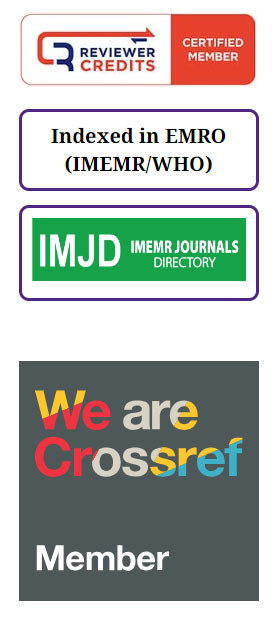Association of Cholesterol and Superoxide Dismutase in Patients with Polycystic Ovary Syndrome
DOI:
https://doi.org/10.59119/ajms.2023(3).2.2Keywords:
Polycystic Ovary Syndrome, PCOS, Cholesterol, Triglyceride, SOD, HDL, Blood GroupsAbstract
Background: Polycystic ovary syndrome (PCOS) is a hormonal condition affecting 4-20% of women globally. It causes abnormal androgen production, obesity, irregular menstrual cycles, and increases the risk of diabetes. This study aims to investigate the relationship between SOD activity and cholesterol levels in PCOS women of different ages and blood types. Methodology: It is original research, in which we draw blood samples from disease and control patients, and after blood grouping and centrifugation we performed the SOD activity with an ELISA kit and then we performed the lipid profiling with the help of Beckman coulter which ensure the level of cholesterol, HDL and triglyceride in disease patients which vary in every age and blood group. Results: The results show that the SOD value is higher in the age group 26-30 and blood group B+ve, whereas in lipid profiling it also varies in both age and blood group. The value of triglyceride was found higher in blood group A-ve and showed hype in the age group 36-40. The level of cholesterol was found to be higher in blood group A-ve and increased with the age group of 26-30 years. The value of HDL was found higher in the age group 21-25 with blood group O-ve. Conclusion: This study revealed consistently high levels of cholesterol and HDL across all age and blood groups, while triglyceride and SOD levels exhibited inconsistent elevation among different groups. The study's primary limitation is its small sample size, preventing generalizability. To address this, it's recommended that research focus on diverse risk factors influencing cholesterol, HDL, and SOD levels. This approach can lead to improved variable control within the local population, enabling the development of effective strategies for mitigating these elevations and reducing associated health risks.
Downloads
Downloads
Published
Issue
Section
License
Copyright (c) 2024 Avicenna Journal of Medical Sciences

This work is licensed under a Creative Commons Attribution-NonCommercial 4.0 International License.






